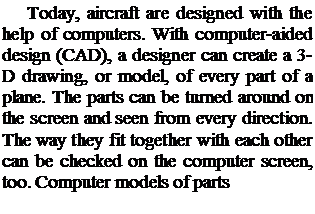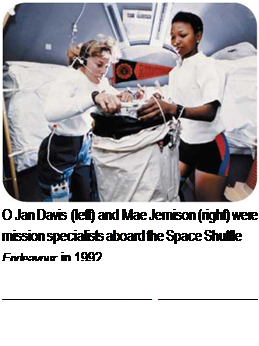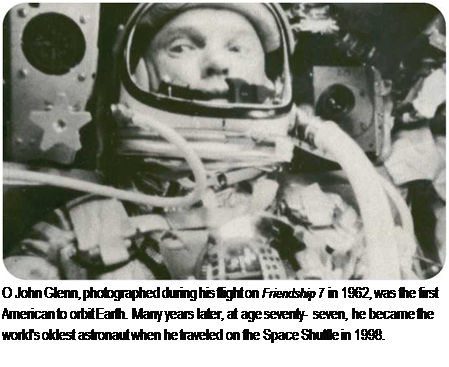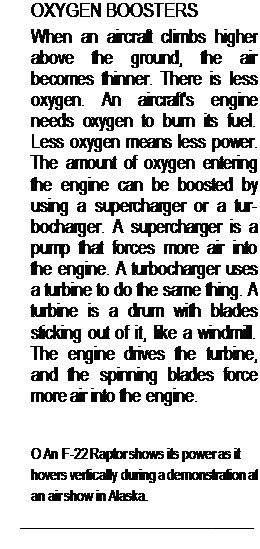ommunication—the conveying of information-is essential to aviation and spaceflight. It would be almost impossible to communicate in these fields without radio. Pilots and astronauts use radio to communicate with each other and with air traffic, or mission, controllers on the ground. Aircraft and spacecraft also send and receive text and data by radio.
Commercial aircraft carry a variety of communications equipment. Aircraft crews use some equipment to talk to air traffic controllers and other pilots. Other equipment is used for sending and receiving text messages.
How Radio Works
Information sent by radio travels as a stream of invisible energy waves moving at the speed of light, which is
186,0 miles per second (300,000 kilometers per second). A radio wave is actually two waves, one electrical and one magnetic, traveling together. A wave of this kind is called an electromagnetic wave. Other electromagnetic waves include light and X-rays. The only difference between the different waves is their lengths—radio waves are longer than the other types of waves.
The length of a radio wave is referred to as its wavelength. The number of waves passing by every second is called the frequency. Radio frequency is measured in waves per second, also called cycles per second, or hertz.
Radio signals are divided into frequency bands. The high frequency (HF) and very high frequency (VHF) bands are used for aircraft communications. A radio signal is transmitted at a particular frequency, or waves per second. To receive the signal, a radio has to be tuned in to the same frequency. Airports and air traffic control centers have their own radio frequencies. During a flight, a pilot has to keep retuning a plane’s radio to match local frequencies.
VHF signals travel in a straight line from transmitter to receiver. When a transmitter and receiver are no longer in line because an airplane has traveled below the horizon, VHF radio contact is lost. Pilots can use VHF radio to talk to air traffic controllers up to only 230 miles (370 kilometers) or so away.
HF radio is used for communicating over longer distances. HF signals can travel beyond the horizon, because they bounce off a layer of Earth’s atmosphere called the ionosphere.
TECH lbTALK
FREQUENCY BANDS IN AVIATION
Band: High frequency (HF).
Frequency: 3-30 megahertz.
Band: Very high frequency (VHF). Frequency: 30-300 megahertz.
(1 megahertz = 1 million hertz)
ч__________________ /
О This diagram shows the wavelength and frequency measurements for electromagnetic waves. Radio waves are long compared to X-rays, and so their frequency is comparatively low.
A radio link for sending signals up to an aircraft or spacecraft is called the uplink. A radio link for sending signals from an aircraft or spacecraft down to the ground is the downlink. The information to be sent by radio-whether a pilot’s voice or data from instruments-is added to a radio signal called a carrier wave. The information changes, or modulates, the carrier wave. When the radio signal is received, the carrier wave is filtered out, leaving the voice or data.
 An airplane designed to fly well at very high speeds is not generally good at flying slowly, so the designer must choose which is more important. Some aircraft have to perform well at both low speeds and high speeds, however. One way of achieving this is to make the plane change shape. The F-14 Tomcat and Tornado fighter bombers have wings that stick straight out to the side at low speeds but then swivel back as the plane goes faster. These aircraft are variable geometry, or swing-wing, planes. Swing-wing planes are not very common, because the machinery that moves the wings adds extra weight to the aircraft.
An airplane designed to fly well at very high speeds is not generally good at flying slowly, so the designer must choose which is more important. Some aircraft have to perform well at both low speeds and high speeds, however. One way of achieving this is to make the plane change shape. The F-14 Tomcat and Tornado fighter bombers have wings that stick straight out to the side at low speeds but then swivel back as the plane goes faster. These aircraft are variable geometry, or swing-wing, planes. Swing-wing planes are not very common, because the machinery that moves the wings adds extra weight to the aircraft.










 Space Shuttle astronauts are designated in one of three categories: pilots, mission specialists, or payload specialists. Pilots are highly trained flight professionals with jet aircraft experience who are in charge of the spacecraft. They operate and navigate the spacecraft and keep its occupants safe. A mission specialist carries out tasks and operates onboard equipment. Mission specialists, for example, will use robotic arms or even leave a spacecraft to perform repairs. They take care of any payload, such as scientific equipment, that is being taken into space. Payload specialists are usually scientists rather than professional astronauts, and they are in space to perform a particular experiment or task.
Space Shuttle astronauts are designated in one of three categories: pilots, mission specialists, or payload specialists. Pilots are highly trained flight professionals with jet aircraft experience who are in charge of the spacecraft. They operate and navigate the spacecraft and keep its occupants safe. A mission specialist carries out tasks and operates onboard equipment. Mission specialists, for example, will use robotic arms or even leave a spacecraft to perform repairs. They take care of any payload, such as scientific equipment, that is being taken into space. Payload specialists are usually scientists rather than professional astronauts, and they are in space to perform a particular experiment or task. that will be carried out in space. This training often takes place in simulators that use computerized virtual displays to give astronauts some experience handling situations that might occur during a spaceflight. Trainee astronauts also work inside a full-size model of their spacecraft to familiarize themselves with its layout and features. When fully trained, an astronaut may have to wait a long time before being assigned to a mission.
that will be carried out in space. This training often takes place in simulators that use computerized virtual displays to give astronauts some experience handling situations that might occur during a spaceflight. Trainee astronauts also work inside a full-size model of their spacecraft to familiarize themselves with its layout and features. When fully trained, an astronaut may have to wait a long time before being assigned to a mission.

